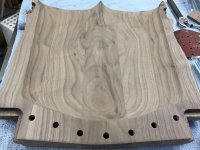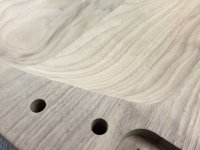Hi all,
I am looking for some advice on which rotex sander to buy. I am building a maloof inspired rocker and really enjoying it. I plan to build more in the future and want to invest in the right tools. I'm mainly looking to buy the rotex to remove the high spots and smooth the seat after sculpting with a grinder.
I already have a ETS 150/3 sander with a soft interface pad but this is not course enough. I'm leaning more towards buying the RO90 because of it's size and ability to conform to the shape of the seat with a soft pad. The RO150 has over double the power but my concern is that it's just too big. In saying this, I've seen a guy who has built dozens of rockers and he uses a RO150 with excellent results.
I would really appreciate your advice ;D
Thank you!
I am looking for some advice on which rotex sander to buy. I am building a maloof inspired rocker and really enjoying it. I plan to build more in the future and want to invest in the right tools. I'm mainly looking to buy the rotex to remove the high spots and smooth the seat after sculpting with a grinder.
I already have a ETS 150/3 sander with a soft interface pad but this is not course enough. I'm leaning more towards buying the RO90 because of it's size and ability to conform to the shape of the seat with a soft pad. The RO150 has over double the power but my concern is that it's just too big. In saying this, I've seen a guy who has built dozens of rockers and he uses a RO150 with excellent results.
I would really appreciate your advice ;D
Thank you!


